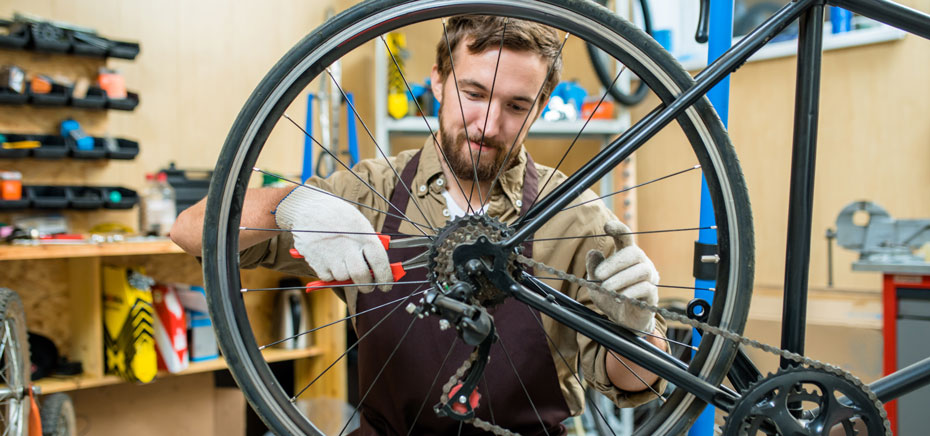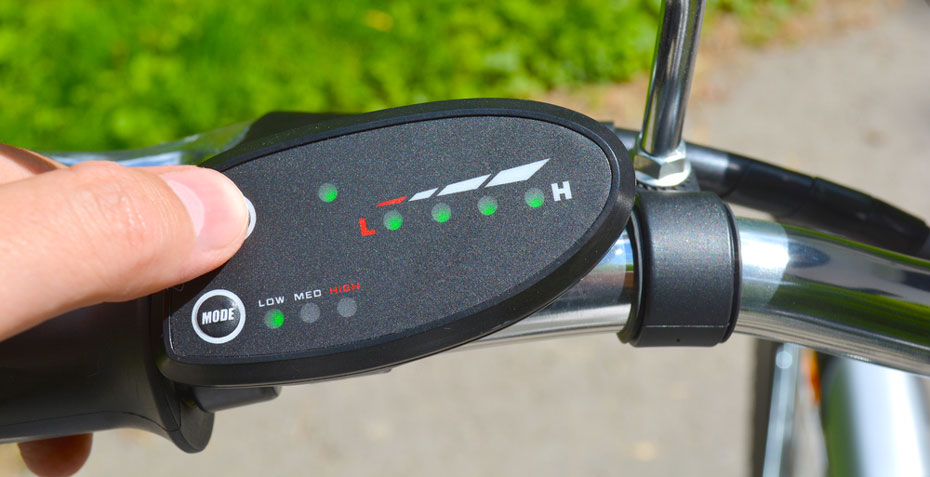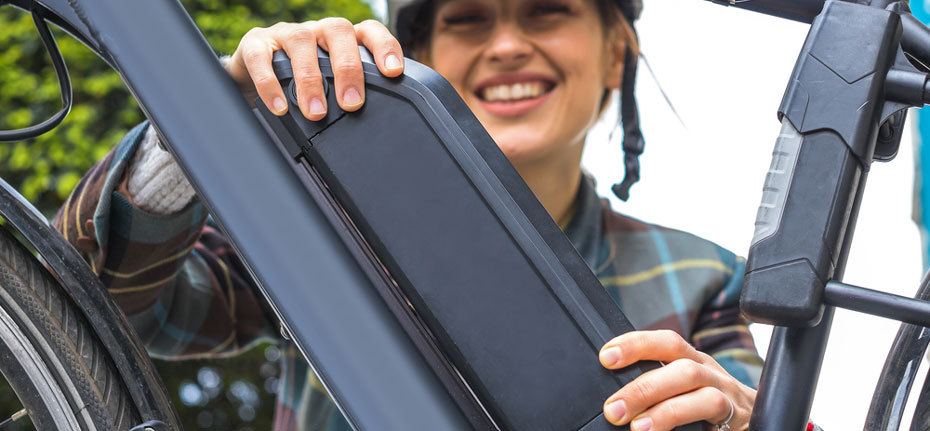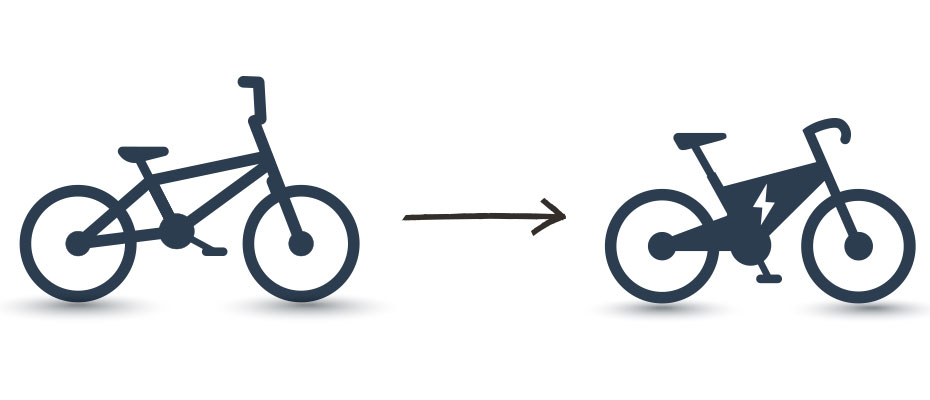If you’ve ever watched enviously as an e-bike rider zooms by you on the incline of a hill, it may be time to wipe the sweat from your eyes and consider joining the e-bike revolution. Ebikes are good for the environment, a great way to get around town or explore the countryside, and you’ll be able to tackle those hills you’ve been eyeing off.
Parting ways with your old bike to upgrade to an e-bike may seem daunting, but the good news is, you don’t have to. There are plenty of e-bike conversion kits available that can transform your trusty steed into an e-bike.
Can any bike be turned into an electric one?

No matter what bike you own, be it a mountain bike, a racing bike, a folding bike, or a hybrid, there’s an e-bike conversion kit to suit. Ebike conversion kits can be fitted to virtually any frame of a conventional bike and can either add power to the front or rear wheel.
Not all e-bike conversion kits are built equal, and some electric conversion kits for bikes are bulkier than others. Most kits are focused on adding a motorized hub to one of the wheels. These oversized hubs have a motor, battery, and gearing mechanism to assist in powering the wheel.
Electric motor-assisted hubs work well, and they’re a quick and easy way to convert your conventional bike into an e-bike. The only downside is they add a considerable amount of weight to the bike, along with a noticeable amount of friction when trying to accelerate. Once you’re at the desired speed, the motor will help you glide along at a suitable cruising speed.
Other types of e-bike conversions are a little more complex, with a motor, battery, and drivetrain being added discreetly to your existing bike frame. Some even hide under the seat post or are fitted to a rear luggage rack.
E-bike controllers and speed limiters
Finally, you’ll need to consider how to control the motor. Most e-bike conversion kits use a throttle, similar to what is used on a motorbike. For this reason, they are legally considered electric motorcycles and not e-bikes per se, and many will be speed limited.
These throttle-based electric conversion kits may require registration and taxes in the same manner as an electric scooter or electric motorbike, so be sure to check the manufacturer’s specifications before purchasing.

How much does it cost to convert a bike to electric?
Ebike conversion kits aren’t cheap, although there are more and more being released each year and this is driving the cost down. If you’re prepared to wait a little while, you can expect to pay less and be sure to keep an eye out for e-bike conversion kits on Kickstarter.
Depending on what type of e-bike conversion kit you choose and the specifications and design quality of the kit will impact how much it costs. The bulkier and more cumbersome the conversion kit looks, the cheaper it is likely to be.
Also, check the power output and battery specifications. The more powerful the electric motor and battery, the more expensive the kit will be.
For a front hub e-bike conversion kit including all the components you’ll need (electric hub, battery, throttle, wiring, etc), you’ll be looking at spending around £175 minimum. This will buy you an e-bike kit with a 35V battery which converts to 500 watts of power.
An e-bike conversion kit with a 48V battery and 1000 watts of power will cost around £335 with all the components needed for the conversion. An e-bike kit with these power specifications will comfortably get you to around 20 mph.
Is it difficult to do the conversion yourself?
Ebike conversion kits require some level of mechanical skill to install. The most basic installation will require replacing the front or rear wheel, and fitting a battery pack, throttle, and wiring to your existing bike frame.
If you’re relatively handy with the spanner, you’ll have this done in an afternoon.
Most e-bike conversion kit manufacturers will provide an instruction and installation guide. If bike mechanics isn’t your strong point, then there are always bike shops that will be able to install your e-bike conversion kit for a fee of around £200.
3 Main types of conversion kits:
There are plenty of different e-bike conversion kits available on the market today. Some are better than others, and some have more features to consider. Let’s have a look at the most common types of e-bike conversion kits.
Powered e-bike wheels
Powered e-bike bike wheels are by far the most common type of conversion kit available on the market. A quick scan on Amazon.co.uk and you’ll find a huge range of electric hub kits. They all look very similar, but be sure to check the specifications before getting out the credit card, as power output and battery range can vary dramatically.
Two local UK e-bike conversion kit manufacturers are Cytronex and Swytch. The Swytch Universal e-bike kit can be fitted to any bike and boasts a 25/32kph top speed and up to 50km range. The Cytronex C1 kit is a great lightweight option, weighing in at just 3.6 kg. It uses its impressive C1 app to offer power and control settings too.
Rear-mounted friction drive e-bike conversion kit

These conversion kits are slightly more bulky than hub-mounted kits. They rely on a motor, battery, and other running gear fitted to the frame of a bike. The motor is fitted near the pedals and has a roller that rests on the rear wheel and provides powered assistance.
They are generally easier to install, and the battery pack is easily installed on one of the bottle rack mounts on your bike. A rear-mounted e-bike conversion kit is considerably more expensive than a hub-driven kit, with one example being the entry-level GBoost kit that costs around £800 plus shipping.
Concealed e-bike conversion kit
Concealed e-bike kits have been around for a few years now, although few live up to their name. Most of these kits are fitted below the seat post or within the triangular frame section of the bike, although their claim for being concealed is questionable.
Concealed e-bike kits are often quite chunky and will always require some sort of drive train system to power the wheels, the most common being rear-friction control from a roller fitted on the motor.
One such concealed kit is made by Korean-based Hidden Power.
Their e-bike conversion kit can make your bike cover 30km without pedalling, or 100km if you pedal-assist. The kit is reasonably small and weighs just 2.6kg.
Conclusion – What’s the best way to convert your bike to an electric one, and is it worth the effort?

There are plenty of good reasons why you should convert your normal bike using an e-bike conversion kit. They’re relatively easy to install, affordable, and repurposing your existing bike is good for the environment too. Depending on what bike you have and the power and range you require from your e-bike kit will help decide what kit is best for you.
The most popular e-bike conversion kit on the market today is the hub-powered e-bike kit. They’re one of the easiest to install and are by far the most affordable option. They offer a good balance between weight, power, and functionality and are worth considering if you’re looking into converting your bike into an e-bike.